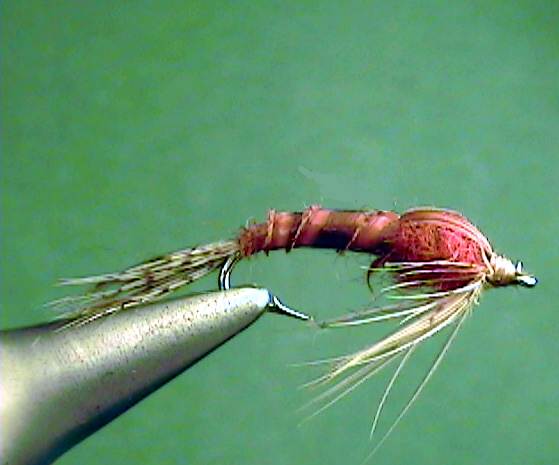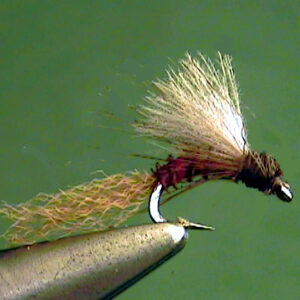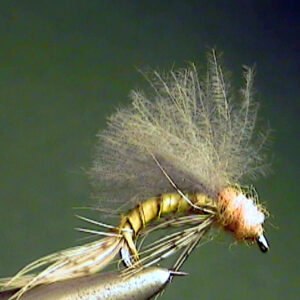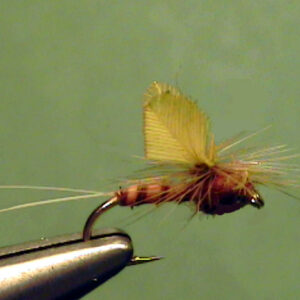Hook Size: 14
he Perfect Fly Western Ginger Quill nymph is a trout fly that imitates the mayfly in the nymphal stage of life. Western Ginger Quill nymphs are clinger nymphs. They stay under the crevice of rocks and crawl around on the bottom to feed or when they hatch and should be fished on or near the bottom during the hatch.
The Western Ginger Quill is the Cinygmula reticulata mayfly. The three tailed clinger
nymphs are a reddish brown color but because they are clinger nymphs that stay hidden
under rocks most of the time, they are not generally readily available for trout. They
migrate to slower moving water adjacent to their fast water habitat prior to emerging and
it is during this time they are prime targets for trout.
Presentation:
Imitations can be fished right on the bottom using a heavy weighted imitation but this is
usually not very effective until just prior to the hatch. Remember, you cannot use lead
in some areas such as Yellowstone National Park. You must use a non-toxic weight of
which there are several version of made for fly fishing.
The idea is to bring the nymph imitation out of the faster water the nymphs reside in to
the slower moving water that is nearby. You want to keep the nymph on the bottom the
entire way. I usually use an upstream or up and across presentation. Allow the fly to
swing around from the fast water to the slower water.
You can also use the “high stickin” method of nymphing. You will need to get rather close
to the area you are fishing to do this. Hold your rod tip high and allow it to swing around
with the fly, keeping it on the bottom. Strike indicators don’t work very well because they
tend to keep the fly off the bottom.
Copyright 2003 James Marsh




